- Joined
- 27 December 2005
- Messages
- 17,661
- Reaction score
- 25,687
Reading way too much precision into a Powerpoint graphic.Probably 15900 kgf for AL-41F-1 and 17200 kgf for izd.30
Reading way too much precision into a Powerpoint graphic.Probably 15900 kgf for AL-41F-1 and 17200 kgf for izd.30
All your posts are heavy on speculation and low on facts, and you keep ignoring people giving you contradictory evidence. For example, the good evidence that Al-Li is not heavily used as intended.Friend ,when we talk about MTOW ,again data from the Su-27SK's Flight Manual :
''Максимальная взлетная масса 33000 кг (при установке колеса КН-41 с шиной модели 017А и колеса КТ-156Д с шиной модели 2А).All of this can tell us that empty weight of both is in the same level,if, again if Su-57 is maybe even lighter on tarmac then Su-27?
Максимальная взлетная масса 28000 кг (при установке колеса КН-27 с шиной модели 016А и колеса КТ-156Д с шиной модели 2А).''
Suppose that MTOW of Su-57 is ≈35 tons,more or less that's it. We must count on every detail such as that Al-Li Alloy used in Su-57's structure is lighter then Al Alloys used in Su-27( V95 and Dural) .Of course Su-57 has composite and metallic skin. Even FWC-fuselage weapon compartments are strenghtened, they are made from very light Al-Li Alloy. As wrote before, engines are lighter by in total of 300kg ,then vertical stabilizers are much smaller and lighter. What about avionics and other el. equipment. Old mechanical radar N001 Myech is alone heavier then all eight AESA radars of N036 Byelka radar system ,I supose but it is very possible.Then we have that fiber optic wiring and of course digital quadraplex FBW vs old hydro-mechanical control system.Also all systems and subsystems in Su-57 are digital,in Su-27 analogue ( heavier of course). You mentioned fuel system with all components , yes but where is hydraulic control system etc.
Somebody is still going to have to explain how "plasma ignition" improves the thrust values of any jet engine.
Somebody is still going to have to explain how "plasma ignition" improves the thrust values of any jet engine. Once the fuel has been ignited in both the main and AB sections, it is self sustaining and 99% complete combustion. Better or more powerful ignition systems may be useful in initiating combustion in the far corners of the flight envelope for main combustor relight after flameout, and AB ignition in the upper left corner, but it doesn't make any more thrust once lit.
This is a presentation powerpoint chart where the engine model graphics are all spaced evenly from each other in both horizontal and vertical axis, and no mention of whether its to scale or not. Doubtful this can be used to calculate thrust figures from.Judging by this diagram,max static thrust in Full AB mode ( special regime) is between 15000kgf and 16000kgf.
View attachment 751343
Soruce: https://bmpd.livejournal.com/3221633.html
And Sukhoi specifically said that their attempts at incorporating the 1461 Al-Li alloy did not work. It could not withstand impact riveting, and had unexpected failure mechanics with particular issue of plastic deformation, and Sukhoi also consider the test samples from VIAM to be cherry-picked. Sukhoi went into this in detail in their 85th anniversary book, and how after a dramatic failure with static testing of T-50-7 with the 1461 Al-Li alloy, Mikhail Strelets decided to abandon it and go back to alloys like B-95, with the conversion happening in phases so that it doesn’t disrupt production of prototypes, and by the time serial aircraft were made, the 1461 alloy is only in some non-load bearing parts. In fact this was reported by insiders back in 2016, and now Sukhoi’s own published account confirms it.To continue the story about construction materials if I can. So we have that Al-Li Alloy V-1461(not 1441 as mentioned before, sorry ,RadicalDisconnect was right) with about 50% of the empty weight of the serial Su-57. As we know this metallic structure material is applied in complete structure of air intakes and centroplane,in that big upper cross section of the centroplane,leading edges of the wings and LEVCON's ,complete carrying inner and skin structure of the vertical stabilizers then in the inner and partially in the skin structure of the horizontal stabilizers.Also it is applied on the places where the wing hardpoints are and as structural carrying inner parts of the wings. Al-Li Alloy V-1641 is welded with Argon. As mentioned before, Al-Li Alloy V-1641 is easily to identify by its yellow color.
I can see bunch of models having poorly reproduced OMLs of prototypes. Regarding B-2 model tested 'ten years before IOC' - it is an utterly BS.If you watched that reportage, you could see that they have models / mock-ups of practically every Western/ NATO aircraft and even space assets . Sergey Nesterov said in one moment that they had and tested the B-2A model ten years before it became operational at all!
Source? Because in the Su-27SK manual, 171,000 kg was specifically listed as "overload" (перегрузка) for conditions of under Mach 0.85, and even the formula was given. Of course the aircraft is capable of somewhat more but only as a safety margin, because all aircraft have some safety margin designed in.That is not correct, Su-27 was primarily designed to be air superiority fighter like the F-15C, and its weight is in line with its intended role.
171000 kg number is actually the amount of lift in kg Su-27 can generate below Mach 0,85 and at 9G, which is simply huge!
And of course, the plane is capable of pulling 9G at weight going over 19000kg.
For example, at 3000 m altitude, the plane can sustain 9G’s at 900 km/h IAS, weighing 20000 kg.

That's not correct, a thinner wing will need more strengthening because it has less area moment of inertia around the bending axis. A longer root chord is better structurally compared to Su-27, and also will help make the absolute thickness greater for the same t/c percentage but root chord of the Su-57 wing where they attach to the fuselage centroplane is not much different from the F-22 (a heavier aircraft than Su-27) mainly because of the centroplane's width. And while widening the fuselage to increase body lift helps reduce the load from the wings, the fuselage is a very low aspect ratio lifting surface, so it also has more induced drag while turning. So it's not always a benefit.Su-57 has smaller wings with longer cord length and thinner airfoil, which doesn’t require as much strengthening as the longer, ticker wings of the Su-27, but can store significant amount of fuel because of greater surface and better usage of internal space.
...
Overall body of the Su-57 is made out of different type of airfoils, which create huge amount of lift and in turn provide the possibility to install the wings with small relative thickness and sharp sweep angle (sharper than F-22 and much sharper than F-35) which in turn translates to excellent transonic and supersonic characteristics. The trapezoidal wing has a negative sweep of the trailing edge, which makes it possible to achieve high values of chord lengths in the root part, and to reduce the relative thickness of the wing in this zone at high values of the absolute thickness of the wing.
...
The consequence of the Su-57 flattened layout is a uniform distribution of the air load/pressure over the surface of the airframe and an increase in the load-bearing properties of the fuselage in terms of creating lift, which makes it possible to maintain the excellent aerodynamic characteristics of the aircraft as a whole with a smaller wing area and less airframe strengthening.
No. The curve of the F-22 intake ducts do create the space for weapons bays. And while the weapons bays are structural "holes", most of it is in front of the wing. Which means that across most of the wing's chord, the structural bulkheads are full depth which carries structural loads better. While the Su-57 structural "holes" from the weapon bays run across the entire wing chord preventing full depth bulkheads at all except the one pair between the two main weapons bays, so the structural depth of the fuselage between the engines is otherwise quite thin. So it's the Su-57 layout that requires more strengthening. Again Sukhoi had to do an entire Stage 2 redesign of internal structure. And this is why some of the light weight numbers are implausible for the Su-57.On the other hand, F-22 is using huge S shaped intakes that curve in horizontal and vertical plane occupying huge amount of space that could otherwise be used for more fuel and bigger/deeper weapons bay, and what is worse, they have placed the main weapons bay below the intakes, and fast weapons bay to the side of each intake.
That creates huge midsection (which is not so good for the best lift to drag ratio) that has “holes” above the holes, with the holes on the each side. So, we have huge surface of empty space that is far more demanding from strengthening point of view, when compared to the Su-57 layout.
F-22 bulkheads have to be much more ticker to be able to provide the most optimal performance.
...
On top of that Su-57 designers are claiming that the plane is lighter and faster than F-22, and there is absolutely no reason to doubt that.
Appears unlikely how can Su-57 managed more internal fuel volume, more internal weapons bay capacity, larger number of control surfaces, all while having less overall volume than the F-22? That does not seem plausible.Su-57 volume - 60.4 m3
Su-35S volume - 69.4 m3
F-22 volume - 65.3 m3
F-35A volume - 49.7 m3
Without a 3D model suitable for this purpose (solid body), it is difficult to determine the airframe volume precisely. If you have one, please shareF-22
weapons bay volume 6.73 m3 (10%)
fuel system volume 14.01 m3 (21.5%)
airframe volume 65.3 m3
Su-57
weapons bay volume 6.5 m3 (11%)
fuel system volume 12 m3 (20%), fuel RT-1 0.775 kg/m3 or T-6 0.84 kg/m3
airframe volume 60.4 m3
This is a presentation powerpoint chart where the engine model graphics are all spaced evenly from each other in both horizontal and vertical axis, and no mention of whether its to scale or not. Doubtful this can be used to calculate thrust figures from.
And Sukhoi specifically said that their attempts at incorporating the 1461 Al-Li alloy did not work. It could not withstand impact riveting, and had unexpected failure mechanics with particular issue of plastic deformation, and Sukhoi also consider the test samples from VIAM to be cherry-picked. Sukhoi went into this in detail in their 85th anniversary book, and how after a dramatic failure with static testing of T-50-7 with the 1461 Al-Li alloy, Mikhail Strelets decided to abandon it and go back to alloys like B-95, with the conversion happening in phases so that it doesn’t disrupt production of prototypes, and by the time serial aircraft were made, the 1461 alloy is only in some non-load bearing parts. In fact this was reported by insiders back in 2016, and now Sukhoi’s own published account confirms it.

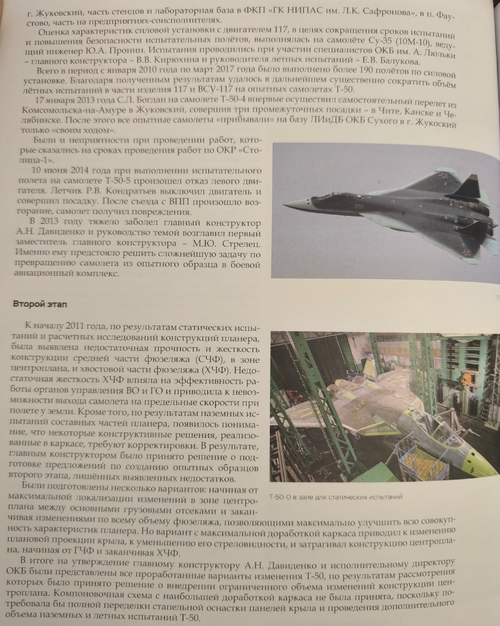
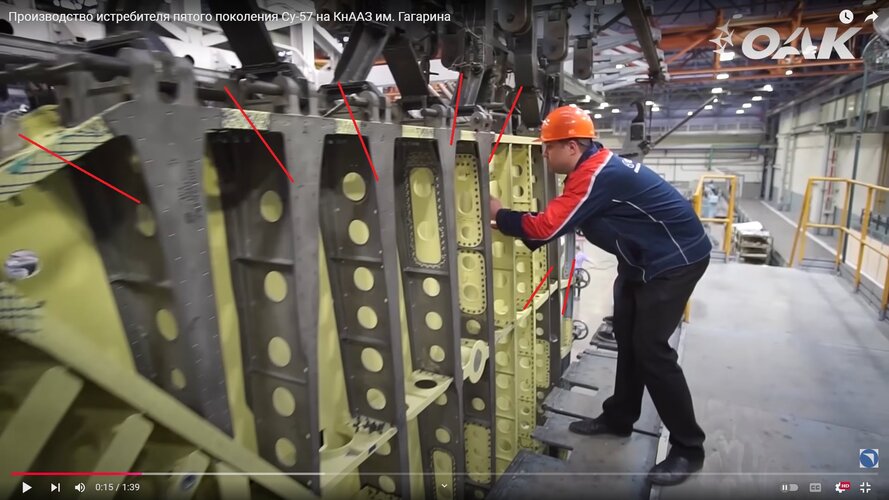

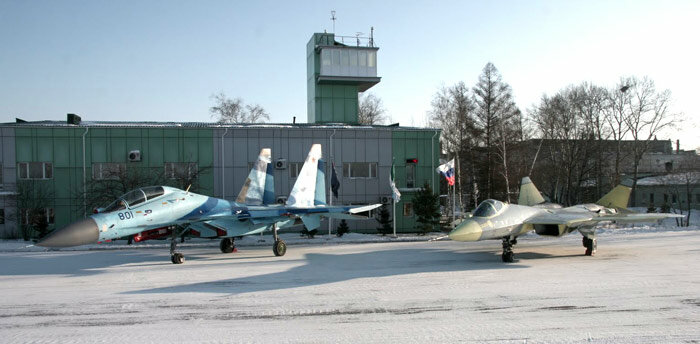
We compared your model with my calculations, the difference is insignificant.Without a 3D model suitable for this purpose (solid body), it is difficult to determine the airframe volume precisely. If you have one, please share
I can see bunch of models having poorly reproduced OMLs of prototypes. Regarding B-2 model tested 'ten years before IOC' - it is an utterly BS.
tell me more please what we did know from the beginning, pleaseThanks to T.B.Cavanagh ,Soviets knew for the B-2A from the beginning of 1980's.
We compared your model with my calculations, the difference is insignificant.
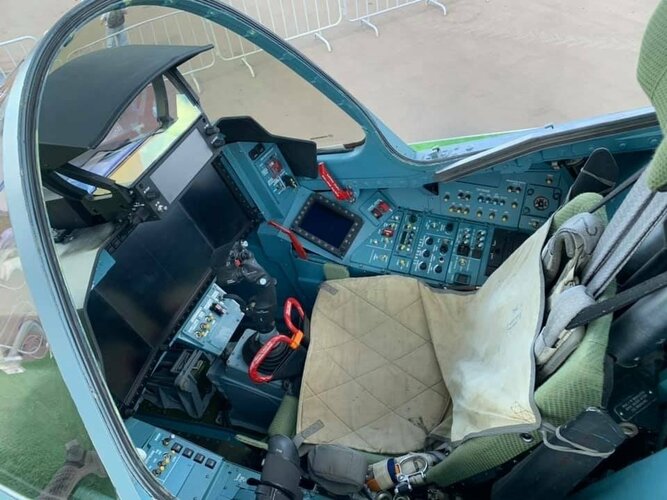
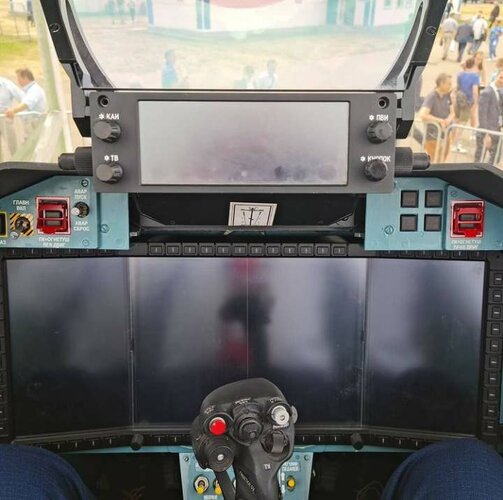

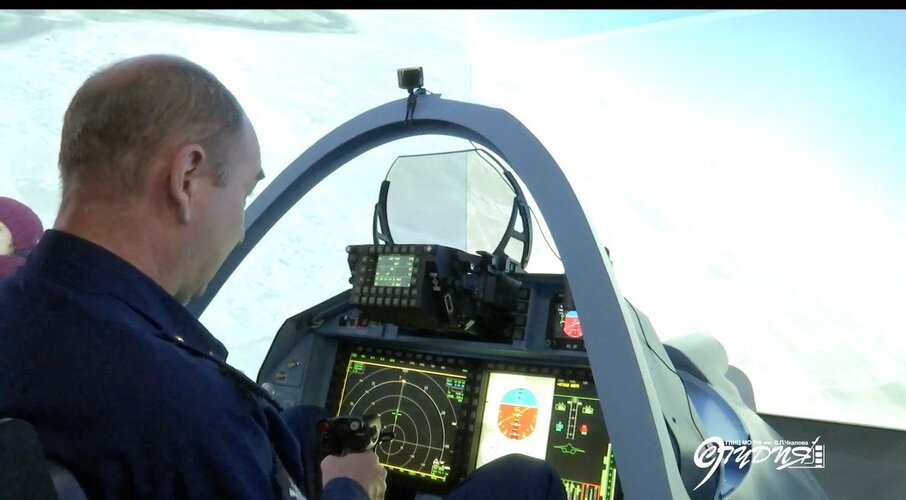
Source? Because in the Su-27SK manual, 171,000 kg was specifically listed as "overload" (перегрузка) for conditions of under Mach 0.85, and even the formula was given. Of course the aircraft is capable of somewhat more but only as a safety margin, because all aircraft have some safety margin designed in.

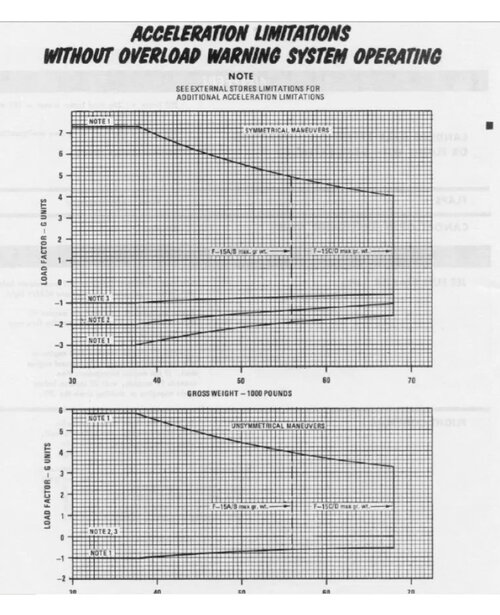
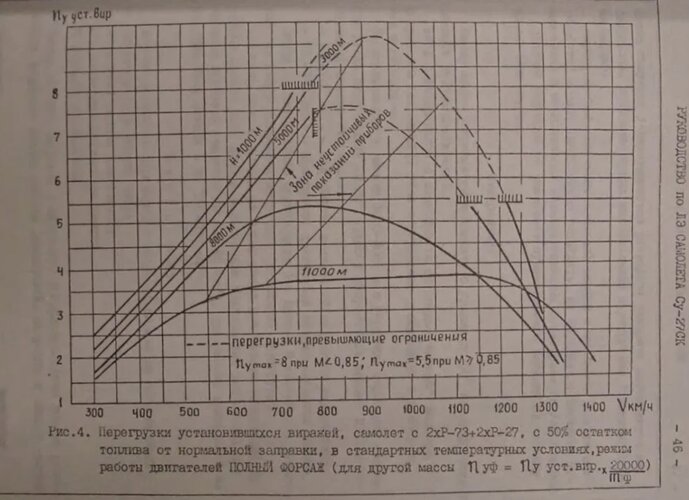
That's not correct, a thinner wing will need more strengthening because it has less area moment of inertia around the bending axis. A longer root chord is better structurally compared to Su-27, and also will help make the absolute thickness greater for the same t/c percentage but root chord of the Su-57 wing where they attach to the fuselage centroplane is not much different from the F-22 (a heavier aircraft than Su-27) mainly because of the centroplane's width. And while widening the fuselage to increase body lift helps reduce the load from the wings, the fuselage is a very low aspect ratio lifting surface, so it also has more induced drag while turning. So it's not always a benefit.
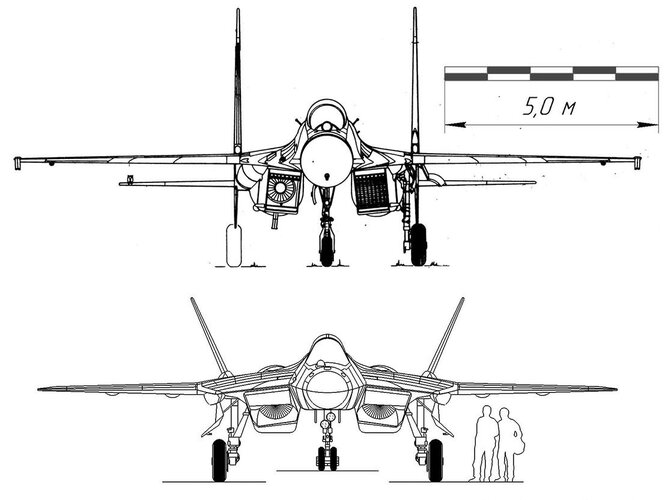
Structurally, the Su-57 fuselage design with the centroplane, while has good useful volume, is structurally risky because while the fuselage depth between the engines is greater than Su-27, a large amount of that depth is not structural because lot of volume is occupied by weapons bays which runs across the entire wing root chord where loads both bending and potentially torsion are the highest. And the weapon bays are structural "holes", not being closed structural loops and don't carry those loads. The only full depth bulkhead is the one pair between the weapons bays. Whereas the F-22's weapon bay volume is almost all in front of wing at the highest loads, so most of those bulkheads across wing root chord are full depth of fuselage which carries loads better.
Not to say that Su-57 can't be lighter, it's possible but that likely involves some tradeoffs in other areas. Nothing is "free" here, everything is part of a compromise in all aircraft designs.
The benefit to the Su-57 fuselage is that for a given fineness ratio, it has very large internal weapons bay capacity, something the Sukhoi patent specifically calls out and Strelets highlighted in interviews too. But the structural risk is undeniable, and you can see that part of the centroplane needing to be reinforced starting with T-50-4 with that visible patch of metal on the back compared to T-50-1 initial design. And T-50-1 and T-50-2 were reinforced too after suffering cracking from MAKS 2011. And this patch of reinforcement on back of centroplane carried over even to Stage 2 redesign and onto serial aircraft. Again Sukhoi's 85th anniversary book goes into the detail of the structural reinforcement needed because the initial T-50/Su-57 design couldn't perform necessary overload.
No. The curve of the F-22 intake ducts do create the space for weapons bays. And while the weapons bays are structural "holes", most of it is in front of the wing. Which means that across most of the wing's chord, the structural bulkheads are full depth which carries structural loads better. While the Su-57 structural "holes" from the weapon bays run across the entire wing chord preventing full depth bulkheads at all except the one pair between the two main weapons bays, so the structural depth of the fuselage between the engines is otherwise quite thin. So it's the Su-57 layout that requires more strengthening. Again Sukhoi had to do an entire Stage 2 redesign of internal structure. And this is why some of the light weight numbers are implausible for the Su-57.
And from lift/drag perspective, take into account the overall volume. A wider, flatter fuselage on Su-57 is beneficial for max lift but also creates more surface area for parasitic drag. And while L/D ratio may be better, the reference area also bigger with a flatter wider fuselage, so for drag it can go either way depending on the flight condition. Especially since lift coefficient at level flight also reduces with increasing speed. Not saying either fuselage shape is better since there are tradeoffs but it's not just one being superior than the other as portrayed here.
When it comes to these weight and speed claims of Su-57 versus F-22, I've seen claims circling around media and by journalists but Sukhoi itself hasn't made any claims one way or the other.
Appears unlikely how can Su-57 managed more internal fuel volume, more internal weapons bay capacity, larger number of control surfaces, all while having less overall volume than the F-22? That does not seem plausible.
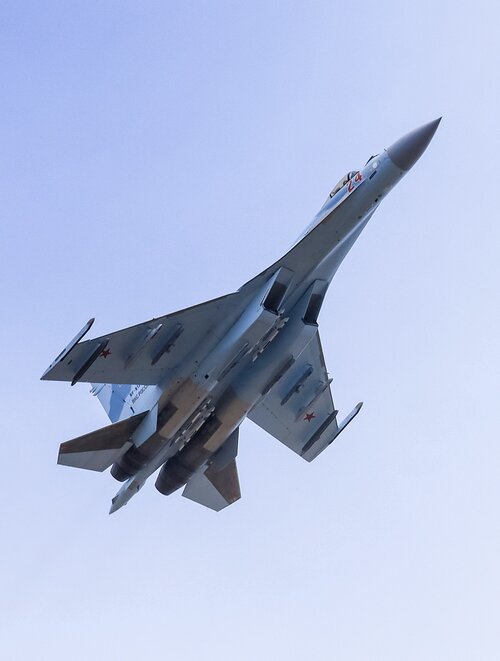
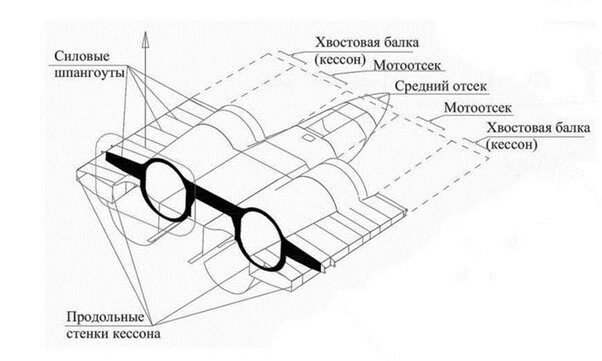
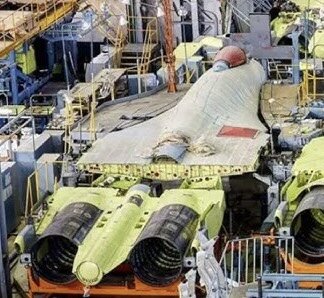
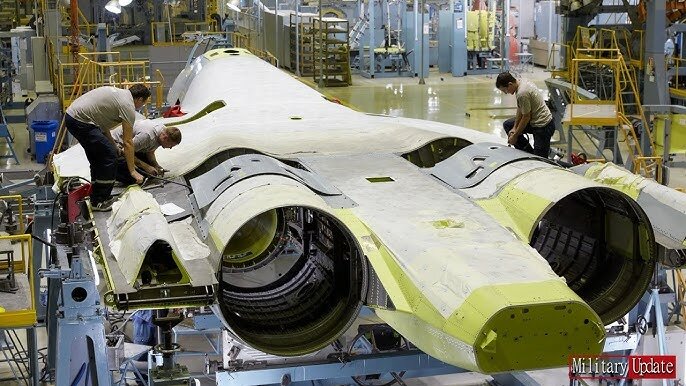

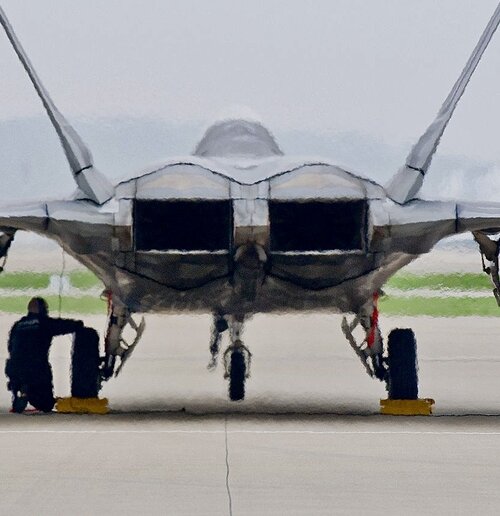
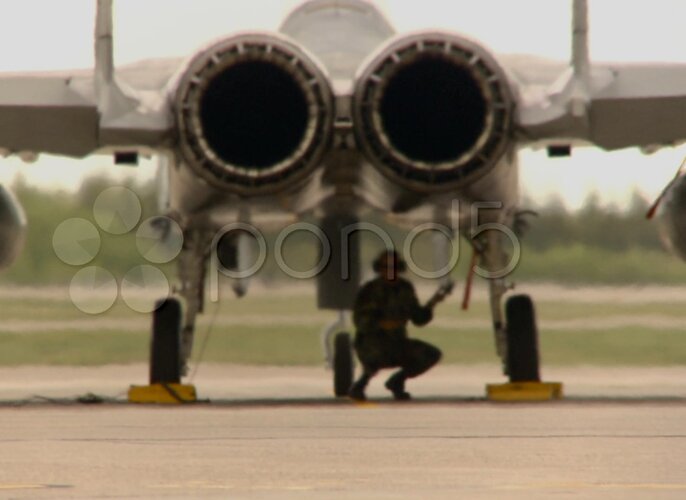
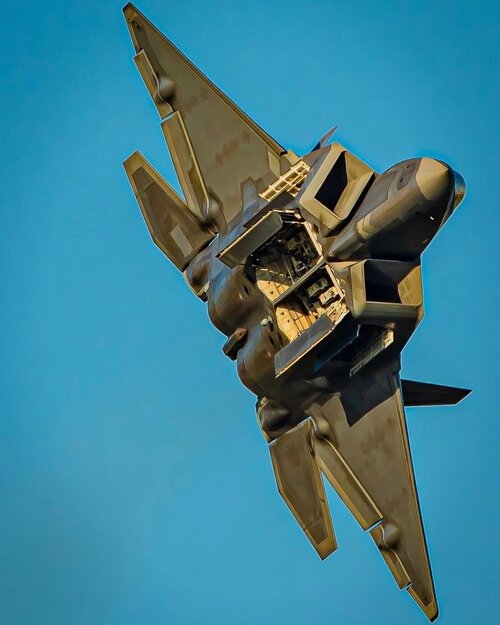
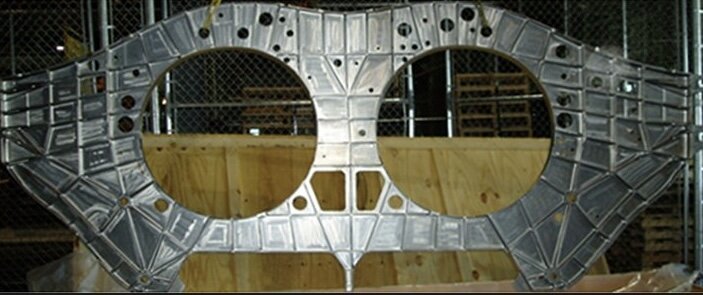
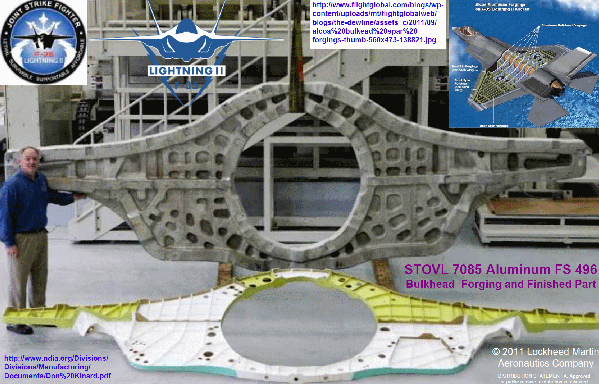

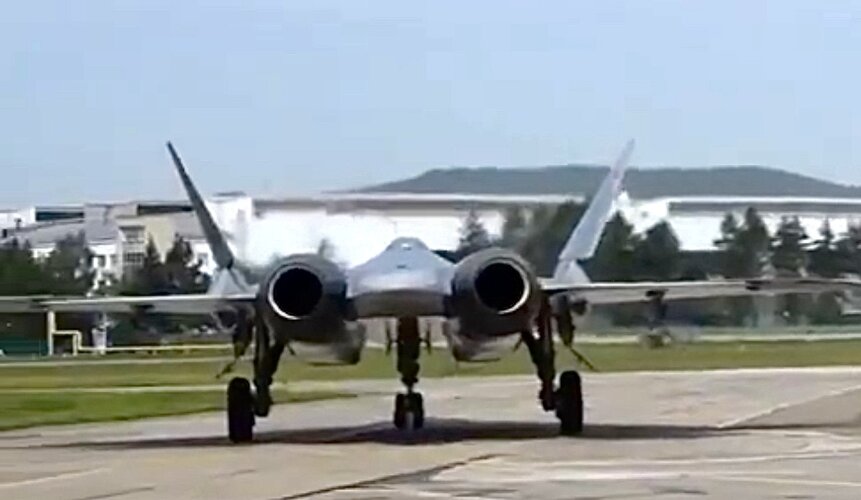
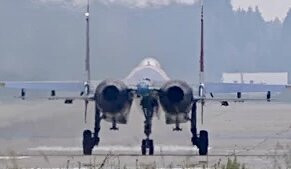
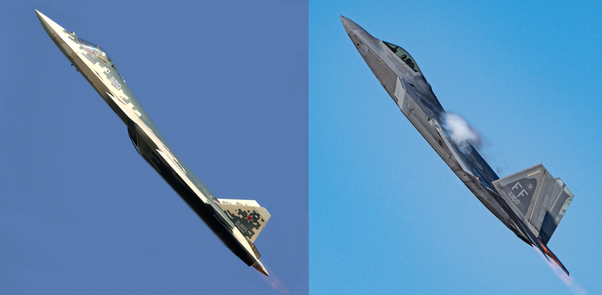
how about this Su-57 Simulator cockpit
View attachment 751705
Actually, Volumetrically, the Su-57 makes much less efficient use of space. If you want to look at that compare the amount of surface area, which translates into drag, into how much volume there is. Also, there's the issue of moments of inertia. The F-22 layout allows for less control power for the same amount of control input due tot the tighter grouping of the mass. Also, the deeper fuselage of the F-22 should make it lighter to be able with withstand the amount of being under load, as section depth is everything.Sorry for the late reply, I didn’t have the time for writing!
“перегрузка“ would be equivalent to the US “load factor - G”.
Under number 2. from your chart, it is stated that the maximal exploitation/operational load factor (G limit) is 8G under 21400 kg flight weight.
171000 kg of lift force corresponds to that weight and G load.
People should be careful with these data because as far as I know, that data is taken from the pilots handbook G limit for the Su-27, and there is different set of G limits for combat performance, from supplemental manual. From my understanding, Su-27 in peace time conditions is always limited to 8-8,5G’s.
Here is the chart for similar type of limitations for the F-15:
View attachment 751667
That only shows that your claim that Su-27 is somehow light because it can’t withstand G forces other fighters can under similar conditions is unfounded.
Here is the chart I was talking about:
View attachment 751447
It states, “перегрузка” - load factor for the sustained turns at the weight of 20000 kg (missiles included, 50% of fuel from the normal fuel load etc.)
The full lines represent the G load for the 8G limit, and intersected lines represent the G load when the exploitation 8G limit is exceeded/overridden.
If there was serious danger of destroying the airframe under 9G sustained turn at 20000 kg, there wouldn’t be such option on the EM chart, and the plane would be hard limited to 8G.
Su-57 is basically using cropped delta wing, and here are the basic structural benefits from using such wing:
“The long root chord of the delta wing and minimal area outboard make it structurally efficient. It can be built stronger, stiffer and at the same time lighter than a swept wing of equivalent aspect ratio and lifting capability.
Its long root chord also allows a deeper structure for a given airfoil section. This both enhances its weight-saving characteristic and provides greater internal volume for fuel and other items, without a significant increase in drag. However, on supersonic designs the opportunity is often taken to use a thinner aerofoil instead, in order to actually reduce drag.”
View attachment 751448
Su-57 has significantly shorter wings, and when pressure is applied, much longer and narrower wings of the Su-27 suffer from much greater moment arm/leverage from the force acting upon it, so they need more strengthening for the same load.
And when we talk about lift to drag ratio, I have almost no doubt that Su-57 is superior in this regard. F-22 according to measurements has worse L/D ratio than Su-27 (11,6 vs 10,1 if I remember correctly).
Taking into account the amount of fuel F-22 can carry, it has very poor range (not so efficient engines and not so stellar lift to drag ratio will do that).
Su-57 is highly unstable plane (both in pitch and lateral direction) which provides excellent L/D ratio in subsonic/supersonic area, and that was possible to do with the use of LEVCON’s which can actively control the center of lift.
There was a study where they were comparing standard model with fixed LERX, and the one that had movable frontal part (LEVCON).
For example, the data for the 25 deg. AoA, shows that the model without LEVCON deflection has Cl - 0,726 and Cd - 0,329.
For the same AoA, model with LEVCON deflection has Cl - 0,835 and Cd - 0,364.
We can see significant increase in Cl and just a slight increase in Cd which leads to better lift to drag ratio.
But in practical terms, LEVCON deflection also decreases drag for the similar lift that is generated.
In other words, model with the LEVCON deflection can generate Cl - 0,742 at 20 deg. AoA, which is even greater than what the model without LEVCON deflection can generate at 25 AoA, but at the same time model with LEVCON deflection will have Cd - 0,241, which is significantly lower than the Cd for the model with fixed LEVCON.
That means the plane with LEVCON deflection will have significantly better lift to drag ratio and SEP (specific excess power).
In practical terms you can generate the same or higher amount of lift at lower AoA, but at the expense of less drag which leaves you with power reserve (you need less power to fight lesser amount of drag), and that translates into better sustained turn rates, or you can use more available lift for better instantaneous turn rates.
And that is just one aspect of many advantages LEVCON’s provide.
Here is how that looks in practical terms:
View: https://youtu.be/je3ieoSb6AA?si=09iduyZAhiWHpHXW
Years back Su-57 demonstrated minimum radius turn in just 15 seconds at an air show, so the plane obviously doesn’t have any issues with increased drag in a turn, even if it uses AL-41F-1 engines.
While the Su-57 weapons bays are not “structural”, they don’t have to be because the solution Russian designers applied is very smart and practical.
View attachment 751669
We can see that the Su-35S can hold 4 missiles in the tunnel between air intakes and engines. If you just close that tunnel with doors you are not going to compromise the structural integrity of the plane.
In a sense, that is exactly what the Russians did with the Su-57.
They have applied proven solutions with blended wing-body layout, and they have calculated the optimal structural depth for the fuselage between the engines/intakes for structural rigidity, and they have added weapons bay doors at the point where they find it the most optimal for the weapons needed to be carried inside, while also taking aerodynamic properties into consideration.
Weapons bay doors are also stressed during high G maneuvering, so additional strengthening of the side walls (where they are attached) is needed.
We can see that on the drawing from the T-50 patent:
View attachment 751672
For that reason Su-57 doesn’t need the full depth bulkheads in that region, and the bulkhead between the weapons bays is simply additional strengthening measure.
Now, look at the structural depth of the fuselage of the Su-35S:
View attachment 751674
It is also “thin”, but no one is complaining, Su-35S is a monster of a plane!
As a matter of fact, to me Su-57 looks more robust in that area even taking the weapons bay into consideration:
View attachment 751675
Now, in my opinion the main reason for structural cracks during testing faze is predominantly tied to the materials used (that are not used in Su-35S construction).
Russians wanted to make the Su-57 as light as possible, and the new materials used were simply not adequate. Using different materials, that have somewhat higher specific weight has solved the problem.
The “Sukhoi book” states that the rejected alloy saved 100-120 kg, which is not that significant on the grand scale, and we can’t make educated guess how heavier Su-57 became, but most of the time almost every plane is getting heavier going from the prototype to operational stage.
But all available data suggests that the Su-57 is lighter than F-22, while being bigger plane dimensionally.
Here is the size comparison between F-22 and F-15:
View attachment 751676
Aside from the bigger wing surface, F-22 is about the same as F-15 dimensions vise, but when we compare cross sections of both planes, difference is huge!
View attachment 751677
View attachment 751678
F-22 has huge midsection because it needs to store extremely long and curved air ducts, weapons bays, and considerable amount of fuel inside airframe that has similar layout as the F-15 with closely coupled engines.
View attachment 751679
Basically the whole area behind the cockpit is essentially empty space that is susceptible to bending under high load, and that needs strengthening. Flat belly of the F-22, while not generating lift in the way body of the Su-57 does, is generating lift, and weapons bay doors, and air ducts are also stressed.
This is the bulkhead of the F-22 in the region in front of the engines where weapons bay ends:
View attachment 751680
It is massive, and since the F-35 basically has the same airframe layout as F-22 (just with one engine), here is the bulkhead of the F-35 from the similar region:
View attachment 751681
It is huge!
F-35 is even heavier than the much bigger, two engined, heavy fighter like F-15!
View attachment 751682
Now, when we compare the midsection of the Su-57 and Su-35S, there is absolutely no radical difference between the two (as is the case with the F-22 and F-15):
View attachment 751684View attachment 751685
In essence Su-57 retains all the advantages of the Flanker layout (highly maneuverable, huge range, big weapons capacity etc.) with not so much downside effects.
F-22 layout with close coupled engines and huge curved air intakes is the main limiting factor for the better exploitation of the internal space, and overall performance.
View attachment 751706
So much thinner, but so much better usage of the space. Su-57 is a true air superiority/multirole fighter, and when talking about speed, there is a reason Su-57 is having complex variable air intakes:
While the air intakes are Mach 3 capable, canopy, composites, and RAM will not allow for that speed (2600 km/h is the usual cited top speed), but my guess is that the Russians are aiming at Mach 2 supercruise with AL-51F-1 engines, where this type of intake will come handy.
Su-35S, being a redesigned Su-27 airframe with modern materials, lighter engines and lighter avionics became heavier than Su-27.

Umm. Not exactly. What the pilot meant to say was "anywhere below around 10,000 feet the F-22 can, overstress-wise, maintain 9G until it runs out of gas".anywhere below around 10,000 feet the F-22 can, fatigue-wise, maintain 9G until it runs out of gas.
Well, it's al-51f.I'm curious if Sukhoi finally solved the loss of thrust issue from changing nozzle geometry
Well, it's al-51f.
They solved it the American way, by adding more of it. Now can spend some.

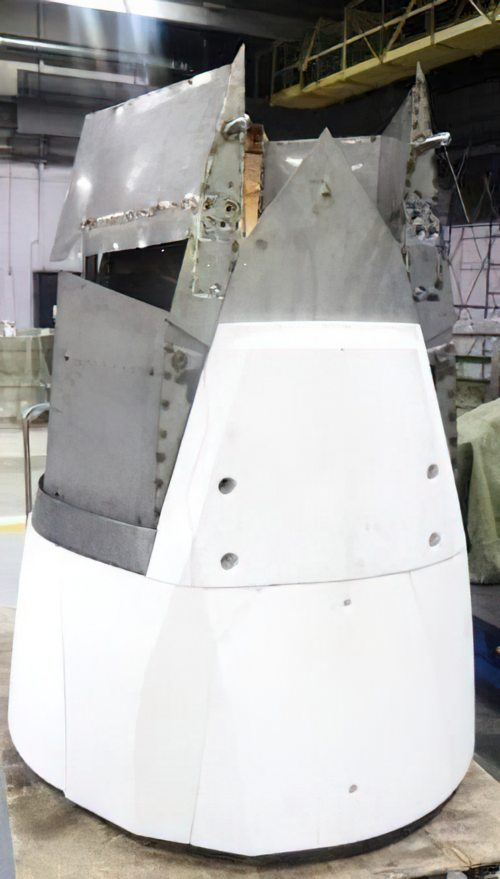
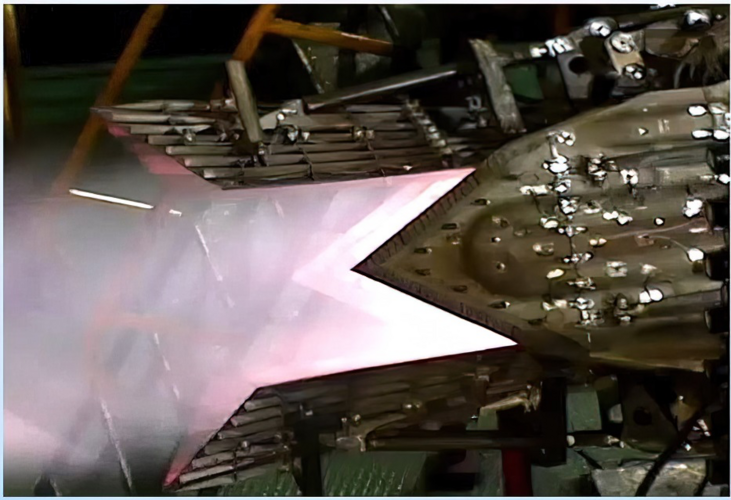
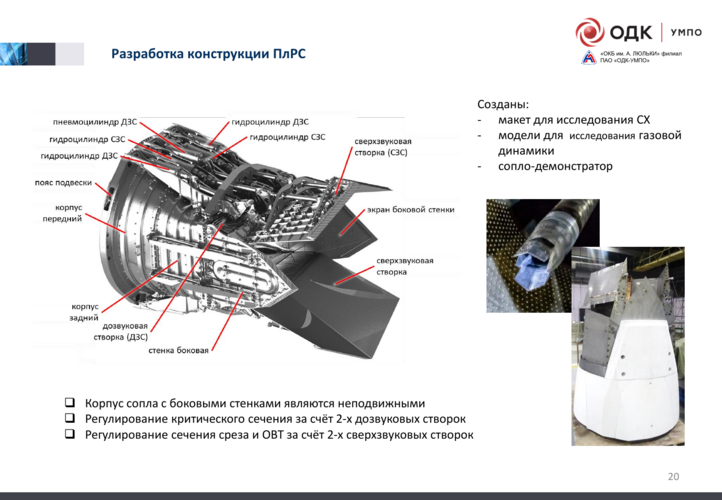
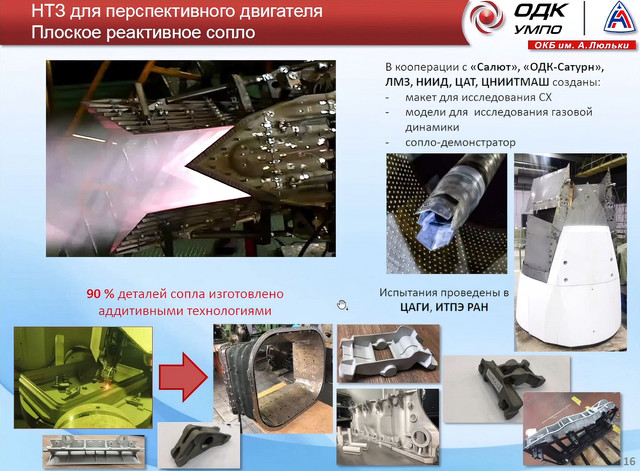



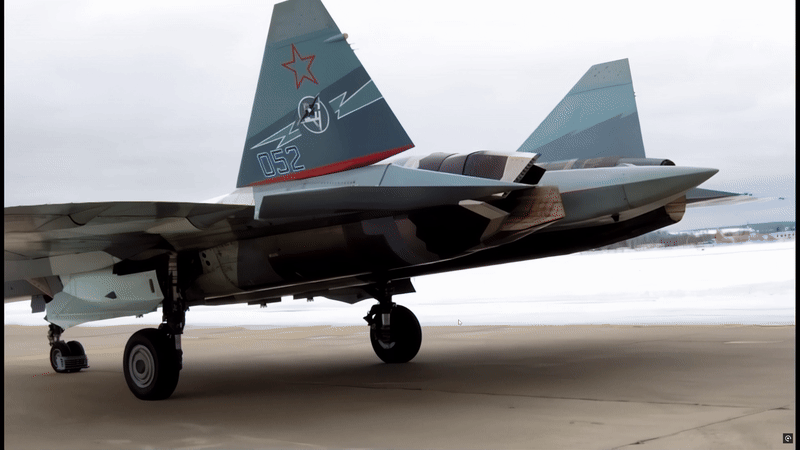
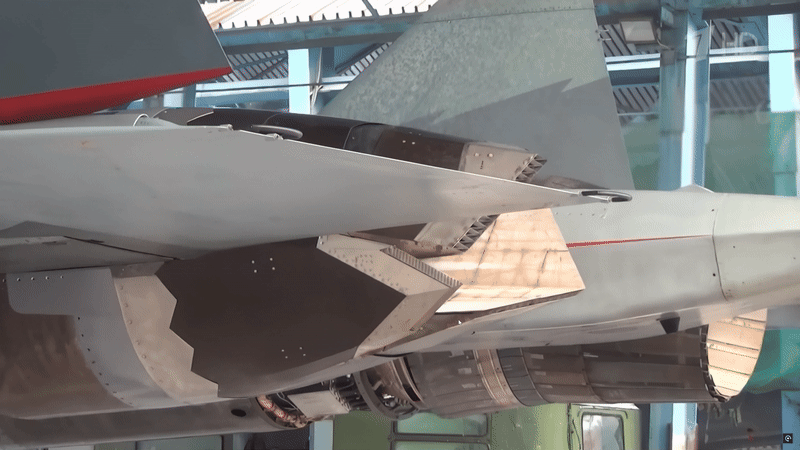
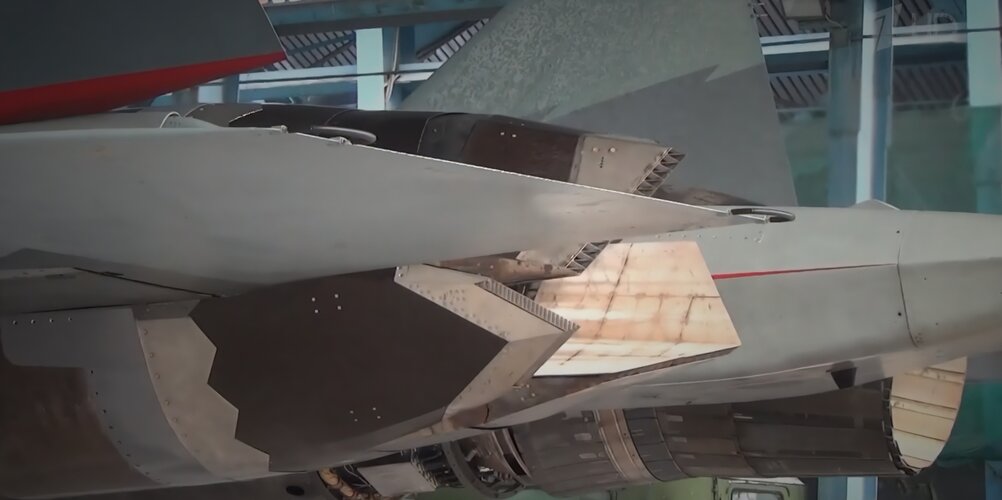
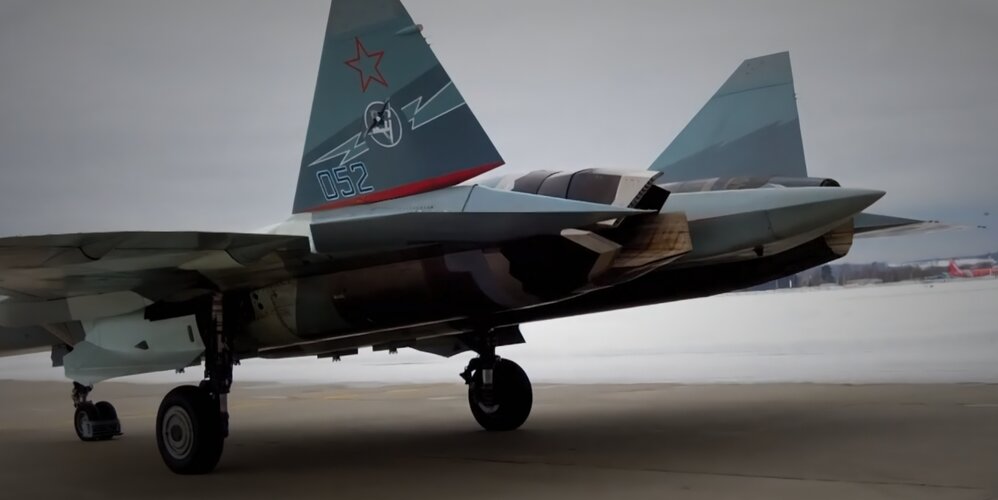
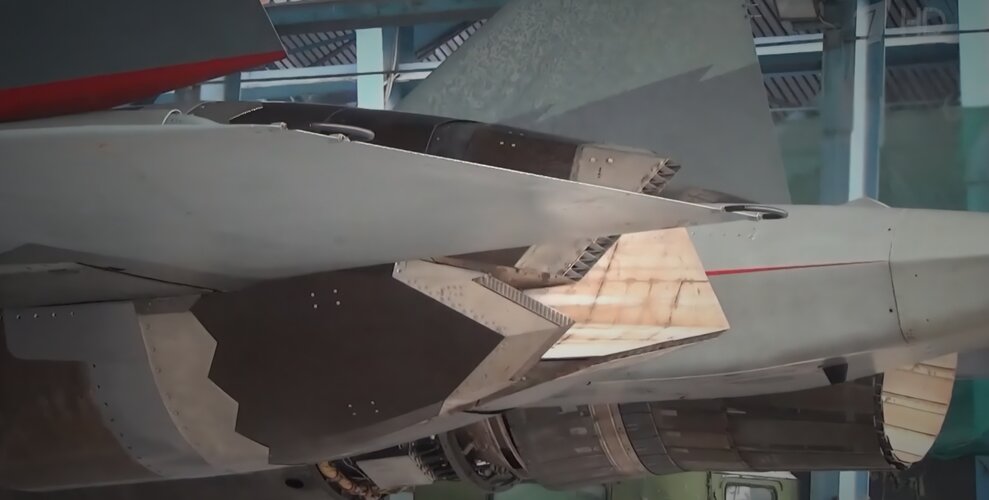
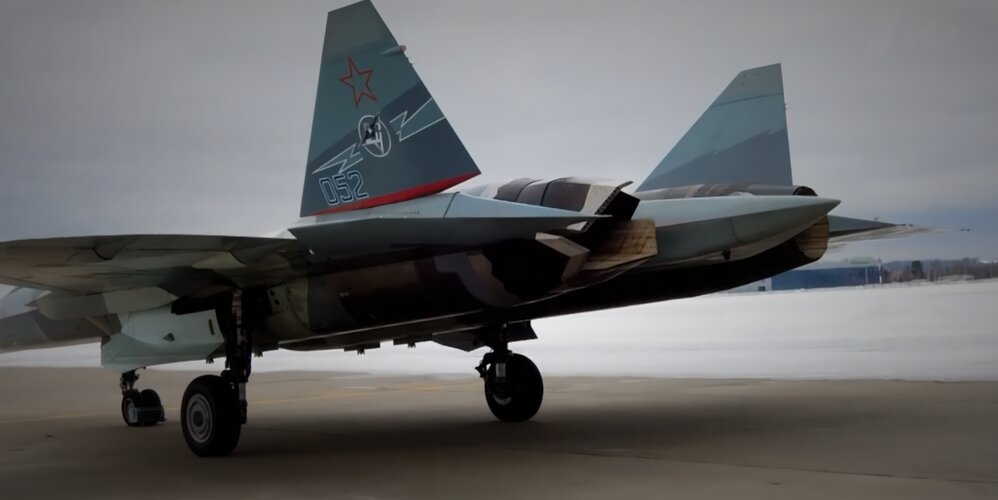
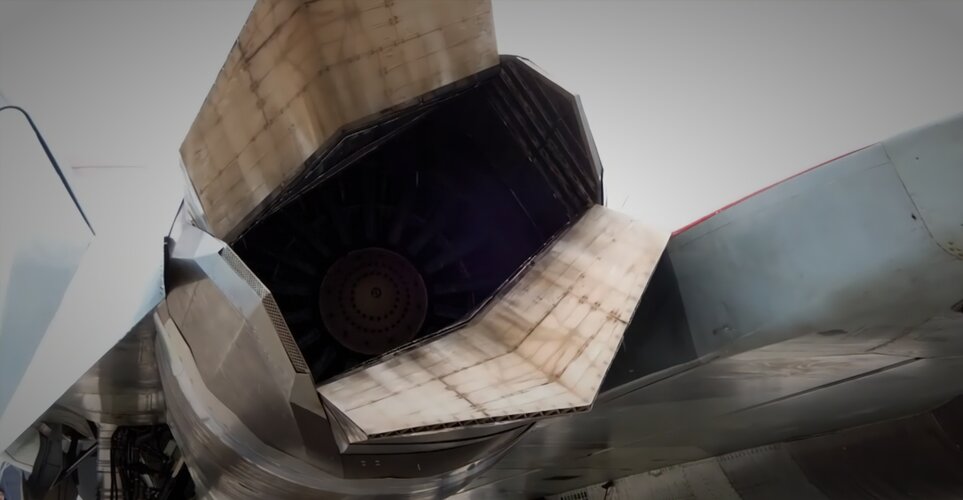
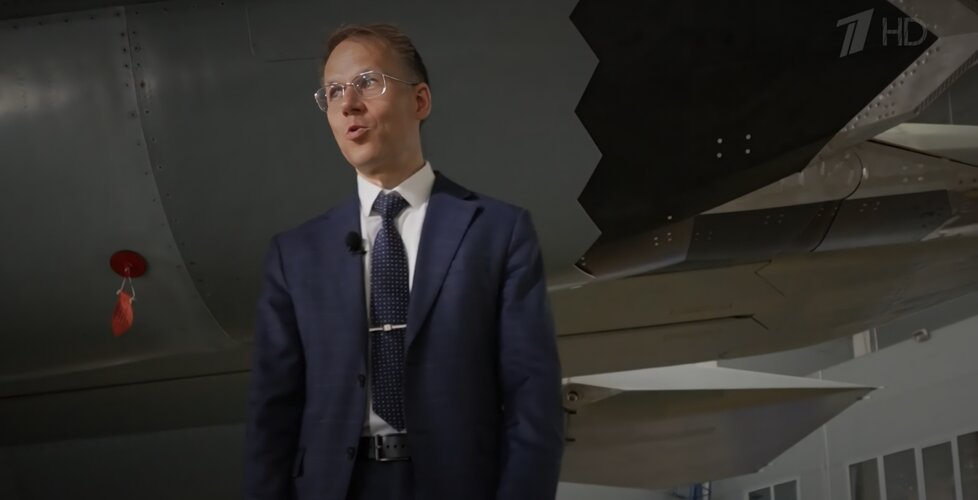
I am not so sure if this is going to installed as part of the stage 2 upgrade program - because if you ** really** want to take advantage of flat nozzles, one would have to redesign the entire rear engine nacelle shape as well (make it trapezoidal rather than circular). The Su-57 does have a weakness in rear side aspect RCS (because I think the circular nacelles meet the fuselage and wing surface at right angles). There are no 'blending Nurb patches' either at the transition boundary between the circular nacelles and the wing/lower fuselage surface.
It's been discussed before: the Air Force wants flat nozzles on the Su-57. Period.Its more probable (like squirrel says) that this is proving as a test-bed for installing flat nozzles on their sixth gen.
So, if that's the case,what was the whole point of spending $$$$ developing LOAN nozzles on Izd-30?It's been discussed before: the Air Force wants flat nozzles on the Su-57. Period.
It is a prototype of flat nozzle for Su-57. Stop dreaming.I think it is a prototype of 6th gen engine
It is prototype of flat nozzle for Su-57. Stop dreaming.
